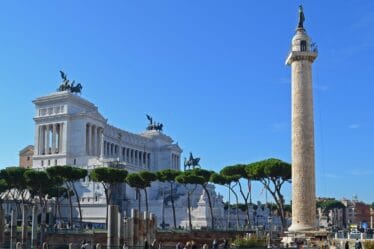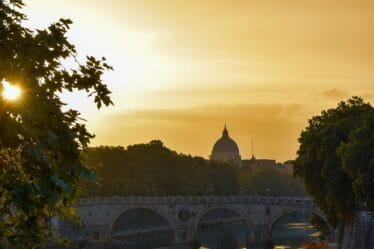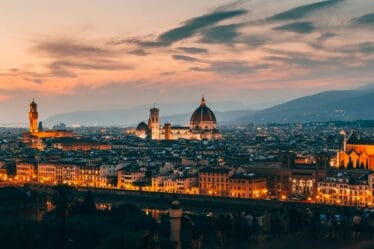
The massive structure, constructed in 1895 as part of an architect Vincenzo Micheli project, is referred to as the picturesque fifth of the square; its history dates back to 1883, when the Jewish ghetto and ancient market were demolished. The architecture of the palace goes beyond its function as a civilian residential building in the bourgeois sense. It becomes a monumental urban sign that imposes itself for the large arcone that he enters through Strozzi. The facades of the side buildings are developed to understand the two orders that each develop for six additional axes, the last of which are in the argument. Following that, each of these lateral bodies grows thoroughly in its own isolation, on two internal brief that go to the route Brunelleschi, and on one of an elongated shape towards via Pellicceria.
The equestrian statue of King Vittorio Emanuele II of Savoy, which was originally placed in the center of the square before being moved to the Cascine square, was framed by the large and high fornice with the large central body, decorated with statues, and crowned by the plastic group of Italy on the throne accompanied by the figures of art and science (removed in 1904). As is evident in some satirical sonnets of the time of Vamba and others: the Starnotti or Schiccherona, a Russian holding of Russian origin that made a surname Starnowka; then Cambarbini and Trattienghi.
The three statues on the top representing from Left to the right : Sculpture, Painting, Music, Architecture
underneath there is the quot: “L’antico centro della citta’ da secolare squallore a vita nuova restituita”
the tramslation is : the ancient center of the city from century of squalor a new life is restored.
The building was the focus of a plan created by architect Marcello Piacentini in 1931 (which was not carried out at the time) that called for the removal of the arch and the simplification of the corners of the two adjacent buildings. The building was for a long time heavily criticized for both its “tronfio” and Florentine character (Florentine is, after all, the reference to a style that is used to define as “Roman,” understood as of the season of Roma Capitale d’Italia).
In 1938, the monument had maintenance interventions, as seen by the porchful flooring, and underwent a comprehensive restoration in 1980. A construction site was opened in 2000 for the consolidation and restoration of the structure, and again in 2022 for the general cleaning of the plaster and decorations, due to the generalized degradation of the four statues representing the “beautiful arts”—sculpture, painting, music, and architecture—and the deterioration of the stone elements and the presence of conspicuous crosses of the plasters. Since the building’s inception, the ancient Pendini pension has inhabited the body of the factory on the right in relation to the Arch (accessible by via degli Strozzi 2). Also on the same side, in the expansive earthly spaces that formerly housed the Edison cinema (the first Florentine cinema opened in 1900 in via degli Strozzi with access from number 1 and moved under the arcades in 1901), there was an Edison bookshop from 1996 to 2012. It was spread across four floors, had extended hours, an internal cafeteria, and reading areas with internet workstations, all of which contributed to its reputation as one of the city’s most well-liked meeting and appointment spots. Since April 2014, the Feltrinelli Red library has been located in the same locations, with characters that are not all that unlike from those previously mentioned. Instead, September 2015 saw the debut of the Apple shop, thanks to a project by Giacomo Sicura, in the body on the left of the Arcone, which had been busy for a while by Banca BNL in the earthly environs.
If you are interested to discover this or other things about Florence let us know, you will come to visit the city in our famous tour Florence free walking tour, totally free tips based. We are starting our tour in Piazza Santa Maria Novella square in front of Minerva hotel



